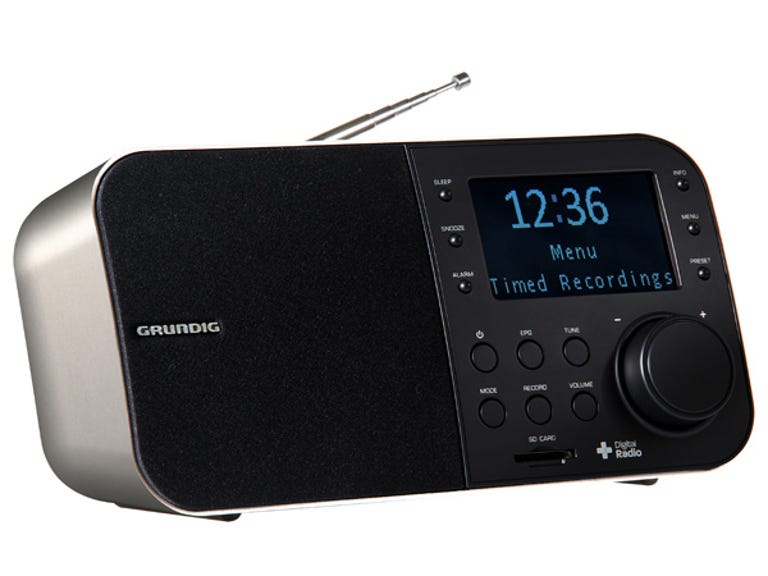 Why You Can Trust CNET
Why You Can Trust CNET Grundig Replay review: Grundig Replay
While the shelves at your local electronics store groan with faceless DAB+ radios, the Grundig Replay's recording features and high-quality sound make it a likeable tabletop.
While digital radio may not be the best-sounding format around, it holds a lot of promise in terms of convenient features. Track names and digital cover art are only the tip of the iceberg with several radios now offering rewind and even recording functionality. The Grundig Replay goes one step further by allowing users to schedule recordings based on an Electronic Program Guide (EPG). But how much use is this to Australian users?
The Good
The Bad
The Bottom Line
Design and features
The Grundig Replay is a small desktop radio resplendent in a gunmetal and black colour scheme. The unit features a readable blue LCD display, which is one of the biggest in its category. Dotted around it are a sensible amount of buttons, yet most of the functions are controllable via the central knob. The radio features a 7W mono speaker which also comes with a bass reflex port.
The radio includes both FM and DAB+ reception, and the ability to record both on SD card, making it one of the only sets on the market to do this. While the FM radio can only record current broadcasts, the DAB+ tuner enables not only timed recordings but EPG scheduling as well. At the moment, the ABC is the only digital service to announce support for the EPG. Like many radios, the Replay also comes with an alarm feature.
Lastly, the radio includes an auxiliary input and a stereo RCA output, which works independently of the volume control for hooking up to a stereo system. Grundig also throws in a card-style remote control.
Performance
There's plenty of competition at the AU$200+ price point with Pure the most visible. But based on our listening tests the Grundig is able to beat the ubiquitous Pure One Classic at the game it invented.
The Grundig Replay has a forward sound, which emphasises vocals without displaying the crass treble effect that troubles many hi-fi tuners. DAB+ may be CD quality in other countries, but not in Australia — unfortunately, anything above about 10kHz is a hard-to-listen-to hash due to the method of transmission, and the Grundig sensibly avoids reproducing these frequencies.
Bass has a decent amount of wallop thanks to the reflex port and the overall sound is balanced. The speaker is only rated at 7W, so you're not going to be able to fill concert halls with sound, but at least the device doesn't distort at maximum volume.
Recording the channel playing at the time is a simple process, simply insert any SD card and press the "Record" button and if you're listening to FM radio it will record in lossless .wav format while the DAB+ recordings appear to be replicated exactly in the broadcast .aac format. As we expected, it's not possible to change channels while recording.
While the recorded .aac files didn't work in iTunes as expected, we did get them to work with Windows Media Player with the CCCP media plug-in installed. The recordings didn't display any tendency for harshness and we were swept back to the days of recording AM radio to cassette tapes.
As an aside, the SD card slot on our test unit was a little fickle, if you exerted the normal amount of pressure to insert it the card would simply eject again.
The only disappointment about the recording feature is the one thing that Grundig can't control: the lack of EPG content. While ABC ostensibly provides an EPG at the time of writing it's simply a list of dates. For example, the single listing for tomorrow's ABC Dig Radio reads: "01/02/2011 Music With Depth".
While the governing body behind digital radio is hopeful that the EPG will take off, we think more devices will need to support it first. In the meantime, ABC needs to list individual programs before this feature becomes useful on the Replay.
Conclusion
While the EPG is a non-starter so far, the recording function is actually quite useful. When you combine this with an attractive desktop radio with a friendly readout and commendable sound quality, then the Grundig Replay manages to poke its head above the competition.


